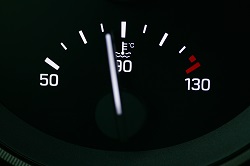Safe, cost-effective technology dispenses hydrogen to fuel cell vehicles
HRSs are the key element of any hydrogen fuel supply chain, acting as the interface between various possible hydrogen supply concepts and end users’ vehicles. The core function of the HRS is the cost-effective, efficient and reliable compression as well as buffering of high-pressure hydrogen with a view to its dispensing. Current compression technology is mechanical and was originally developed for industrial environments, where operation is stable and precisely defined maintenance requirements are followed. Using such technology in fuelling stations, where operation is discontinuous and supervision limited, raises cost and reliability issues.
A new approach
The EU-funded H2REF(opens in new window) project addressed this compression and buffering function for the refuelling of hydrogen fuel cell passenger vehicles to advance a new compression and buffering process. “This is based on the use of hydro-pneumatic accumulators, which give a more reliable, economical solution while still providing a greatly improved performance,” says project coordinator Frederic Barth. The consortium sought to develop and validate a novel solution for the refuelling of gaseous hydrogen-driven light-duty vehicles, based on the use of bladder accumulators for performing hydrogen compression and buffering. “Dispensing of hydrogen to light-duty vehicles involves buffering in addition to compression, because high-pressure hydrogen needs to be accumulated prior to dispensing. In fact, it would not be economical to have all the required compression carried out only when dispensing is underway,” Barth explains. Project partners investigated the compression and buffering function for the refuelling of 70-MPa (700 bar) passenger vehicles. This encompassed all the necessary activities for advancing a novel hydraulics-based compression and buffering system that is highly cost-effective and reliable from technology readiness level 3 (experimentally proven concept) to technology readiness level 6 (technology demonstrated in a relevant environment).
Challenges overcome
The process design required a number of major challenges to be met. “For example, bladder accumulators operating at the elevated pressures required for hydrogen dispensing (up to 900 bar) had never been developed before and the large opening required for bladder replacement made this particularly difficult,” Barth observes. In addition, the elastomer(opens in new window) (rubber) material constituting the bladder accumulator can be severely damaged by the hydrogen absorbed by the material, through hydrogen release within the material when the pressure is decreased. Researchers therefore tested elastomer materials to identify those capable of withstanding the operating conditions. Hydrogen also permeates through the bladder walls into the hydraulic oil. “Operating a hydraulic system with hydrogen was completely new and a solution for maintaining safety in such conditions needed to be found,” comments Barth. “H2REF showed that the technical challenges associated with this approach could be overcome by delivering a fully developed process as well as a full-scale containerised industrial prototype system that was successfully operated and evaluated in closed loop operation.” Thanks to its scalability, the novel combination of mature technologies (hydraulics and accumulators) developed by H2REF is potentially a game changer for addressing the durability and capacity requirements of hydrogen dispensing both for light- and heavy-duty vehicle applications, helping these to come to the market. “The knowledge gained will allow subsequent development to focus on optimisation of components, design for manufacturing and maintenance, further demonstration, and the development of a product range for different refuelling station sizes, thus taking this innovation to the market,” Barth concludes.







